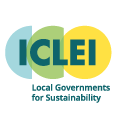Santa Fe has notable biodiversity and exceptional natural conditions throughout its territory. Both characteristics enable the implementation of nature-based solutions for climate adaptation and mitigation as well as initiatives oriented to natural conservation and revalorization. The city has a population of 429,026 inhabitants and it’s composed of a high percentage of young people. Santa Fe is home to three national universities and several institutions that stand out for their knowledge production and educational facilities. As a consequence, the city has a strong scientific technological sector that promotes the creation and expansion of local technology-based companies with a high innovative profile.
Sustainability Challenges
For several years, Santa Fe has been experiencing a severe social and urban fragmentation. South and central areas are well served, and exhibit good-quality urban infrastructure, connected public transportation offer, a wide net of public spaces that satisfies the needs for recreation and access to cultural goods, green spaces, squares and coastline. On the opposite, an important border area of the city (northwest, north and Alto Verde) is characterized by a lack of these services.
In response to this, in 2020, the Municipality of Santa Fe launched the Plan Integrate Santa Fe (Integrar Santa Fe, in Spanish), a broad and multidimensional strategy that seeks to reduce existing inequalities and create a cohesive community. The local administration implements coordinated actions from different departments around three main components: environmental-territorial, associative, and care and social integration.
- Improve Access to Public Services in Neglected Neighborhoods
The local government has put in place several programs, pursuing the hypothesis that served and better connected neighborhoods favor the settlement of diverse socio-economic sectors and socio-urban integration. Initiatives such as the comprehensive project Camino Viejo a Esperanza, the Barrio Mio program and Parque Mitre are examples of the type of actions to be deployed as part of the approach to this challenge.
- Strengthen Community Participation and Socio-State Networks
In our city, a lack of integration and neighborhood identity has been detected, characterized by patronage practices, apathy and obstacles to citizen participation in the territory. This is also due to the scarcity of appropriate institutional spaces for networks to work their mission. The Municipality is actively participating in existing networks and the creation and promotion of new ones. There are also calls for Dialogue Roundtables to jointly address multiple problems such as mobility, urban management, habitat and public spaces.
- Ensure the Social Integration of Families
Care has been detected as an urgent need in certain areas of the city. Care is a key dimension of people’s lives and an indicator of quality of life. It covers both what concerns the essential daily provision of physical, affective and emotional wellbeing. Caring cities with a mainstreamed gender perspective are fairer and favor better citizenship. Santa Fe already counts with 18 caregiving municipal stations.
The city has reached main milestones on its journey to sustainability by applying the Integrar Santa Fe Plan . Some examples are the advances in the provision of basic services in the Northwest; the expansion and optimization of the public transport service and the bicycle lane network; and the improvement of public and green spaces in the city. In the same direction are the initiatives of urban hygiene, waste separation and circular economy, and the eradication of small garbage dumps.
Integrar Santa Fe

